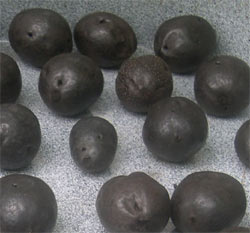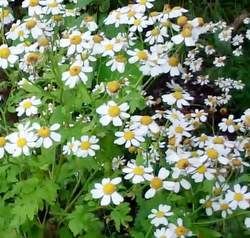The Pickled Walnuts project: stage two. Plus original recipes for spiced pickling vinegar
Posted by Fiona Nevile in Chutney and Pickles | 43 comments Good pickled walnuts are a wonderful accompaniment to strong cheese or cold meat. They are an English tradition. Often they are made with malt vinegar and can be very challenging to eat. This year I was determined to try to make the ultimate pickled walnut.
Good pickled walnuts are a wonderful accompaniment to strong cheese or cold meat. They are an English tradition. Often they are made with malt vinegar and can be very challenging to eat. This year I was determined to try to make the ultimate pickled walnut.
Part one of the challenge can be perused here.
After the two week saline soak (changing the solution after one week) I rinsed the walnuts and moved them down to the greenhouse to dry. This can take from 3-5 days. They turn a greyish black quite quickly. Not knowing how black the walnuts should be, I gave them a five day rest before starting the pickling process. As I had used our entire tranche of roasting trays, the pickling process had to start immediately on day five. D needed the trays to cook the Sunday roast.
Wishing to avoid expensive litigation involving claims for extensive dental repairs, I tested the walnuts for a final time. They were divided into four piles. Very soft, softish, firmish and hard. The latter were tossed immediately and the firmish will be devoured last. I’m hoping that the pickling process may soften them a little more. Next year I’ll be picking well before the end of June.
I’d researched and endlessly mulled over the recipes for my pickling spice. There aren’t a lot of pickled walnut recipes out there. I studied HFW’s one in The River Cottage Cookbook and eventually discovered this great site written by a pickled walnut fanatic back in 2005. Some of the links have died on the collection of pickling recipes. But enough had survived for me to get some pointers and the list of pickled walnuts for sale gave me a clear idea of the essential ingredient – vinegar. The rest is up to you. I did spot that many of the older recipes included garlic.
I made two pickling vinegars, one using white wine vinegar and the other cider vinegar. Very different. They both tasted good with a satisfying depth of flavour. But how will they combine with the walnuts and what will happen when they mature? Only time will tell. The results will be posted well before the start of the green walnut picking season next year.
I pulled out all the stops for these as they are my entries for Magic Cochin’s Inter Blog Great Pickled Walnut Challenge that will take place sometime in December. Meanwhile the jars are maturing on the new shelves in the barn. I’m still clearing up from the landslide disaster on rainy days. It could take some time.
The Pickled Walnuts project. Stage two
- Having soaked your walnuts in a saline solution rinse them well in cold water and set them on non porous trays to dry. Beware setting them on plates unless you want a decoration of rows of small brown dots for ever.
- Leave them to blacken and dry for 3-5 days. They will turn a deep, dark grey. The colour didn’t change much from the third day onwards.
- Re test the walnuts for woodiness. Use a darning needle to prod the stalk end of the nut as this is the place where the nut casing hardens first. If the nut casing is hard, reject the nut.
- Pack the nuts in sterilised jars leaving enough space to completely cover them with your pickling vinegar (use a ladle and funnel). Seal with sterilised plastic lined metal lids immediately.
In the end I had roughly 50 walnuts ready to be pickled and needed 2.5 litres of pickling spice to cover them. Here are my recipes.
Garlic and Tarragon spiced pickling white wine vinegar recipe
- 1.5 litres of white wine vinegar
- 3 tbsp of mixed white, pink and black peppercorns
- 3 tbsp of allspice berries (whole)
- 6 cloves
- 1.5 tsp of ground mace
- 1.5 tsp of dried tarragon
- 1 bay leaf
- 1 plump clove of fresh garlic chopped very fine
- 3 tbsp of dark molasses sugar
Bring all the ingredients to simmering point and barely simmer for about an hour. Stir briskly and using a ladle and funnel, cover the walnuts with the hot spiced vinegar and seal the jars immediately. Leave to mature for 3 months.
Sweetish ginger spiced pickling cider vinegar recipe
- 1.5 litres of organic cider vinegar
- 2 tbsp of mixed white, pink and black peppercorns
- 3 tbsp of allspice berries (whole)
- 9 cloves
- 1.5 tsp of ground mace
- 3 level tbsp of grated fresh ginger
- 2 plump cloves of fresh garlic chopped very fine
- 9 tbsp of dark molasses sugar
Bring all the ingredients to simmering point and barely simmer for about an hour. Stir briskly and using a ladle and funnel, cover the walnuts with the hot spiced vinegar and seal the jars immediately. Leave to mature for 3 months.
Leave a reply






Very interesting. I had never heard of pickled walnuts ’till a British friend came to lunch and saw our English walnut farm in California. Do you use English walnuts or black walnuts; or can you us both? Thank you, Isabelle
have you eaten the walnuts in june before the nut ripens..ie as in the french manner…that is peel off the green husk & eat the contents in a green salad ?
The HP pickle sounds very interesting..good idea. Pickled walnuts also good in steak pie instead of the old fashioned oysters.
We have been pickling walnuts from our gdn trees since 1939! We make beer from the leaves, wine from the sap when it is rising in march..(tap the trees ,fill a bucket of clear sap – add yeast and sugar and ferment for 3 months. After two years it will knock your head off!) Pick them not later than end of June before the nut has formed for pickling purposes. I approve of the above pickling recipe….. Then my grandmother used to pestle and mortar the green husks in Oct/Nov and add a little water….boil it up on the stove….strain and then dipped her comb in it and never went grey! Definitely add more sugar and mace to the vinegar, when pickling – this will greatly improve the taste for the modern housewife (The victorians liked them tart..which rather makes them unpopular today). If you have any left over from previous years . whizz them in your food processor with some tomato paste to create an acceptable “Daddies HP Sauce”. They keep for about 5 years before they eventually go soft…but they’re still edible!!Good luck with your pickling!
P.S. The brown husks (in October) mixed with bees wax makes a very good stain for removing scratches from furniture.(But I can’t imagine the modern housewife bothering herself with that recipe!)
Hi Emma
Thanks so much for the award!
Hi Pat
I’m on tenterhooks to see what the taste like.
Hi Magic Cochin
I pulled out all the stops for this one! Looking forward to the great PW challenge at Christmas time.
Hi Monica
They are rather good with cheese or cold meat.
We don’t grow walnuts but a friend has a couple of trees in her garden.
Soon the wet (un dried walnuts) will be ready and they are delicious.
Hi Diane
What a shame that you don’t have access to a tree. They are such useful nuts.
Well done I wish I had access to walnuts but unfortunately I don’t know anyone with a tree and my garden is to small to accommodate one. My husband loves pickled walnuts and I always buy him a jar for Christmas
I have never even heard of pickled walnuts before! It sounds really interesting. Did you grow the walnuts in your own garden?
/Monica
We’re so looking forward to tasting the different preserved walnuts. Your spiced vinegars are impressive! and will be very different from ours which was based on the HFW RC Cookbook recipe.
Celia
Another informative blog!!! Very ambitious there Fiona, looking forward to when you have them to eat and blog about.
Another fascinating post, which is why I’ve given you a Brilliant Blogger Award!
http://coopette.com/blog/brilliant-bloggers